When you hear about Cuba, scuba diving is probably not the first association that comes to your mind. Handmade cigars, aged rums and old cars might be what most people think about, but what if we told you that Cuba hosts the third largest reef in the world? The Gardens of the Queen, or Jardines de la Reina in Spanish, is a complex ecosystem of small virgin islands and mangrove forests where you can find untouched reefs, curious sharks and mighty crocodiles. Located 50 miles (80 km) off Cuba’s southern coast, extending for 93 miles (150 km) and with an area of 840 square miles (2,170km2), this is one of the largest protected areas in the Caribbean.
It’s time to add Cuba’s Jardines de la Reina to your diving bucket list. Explore this magical ecosystem and complement your visit with some culture.
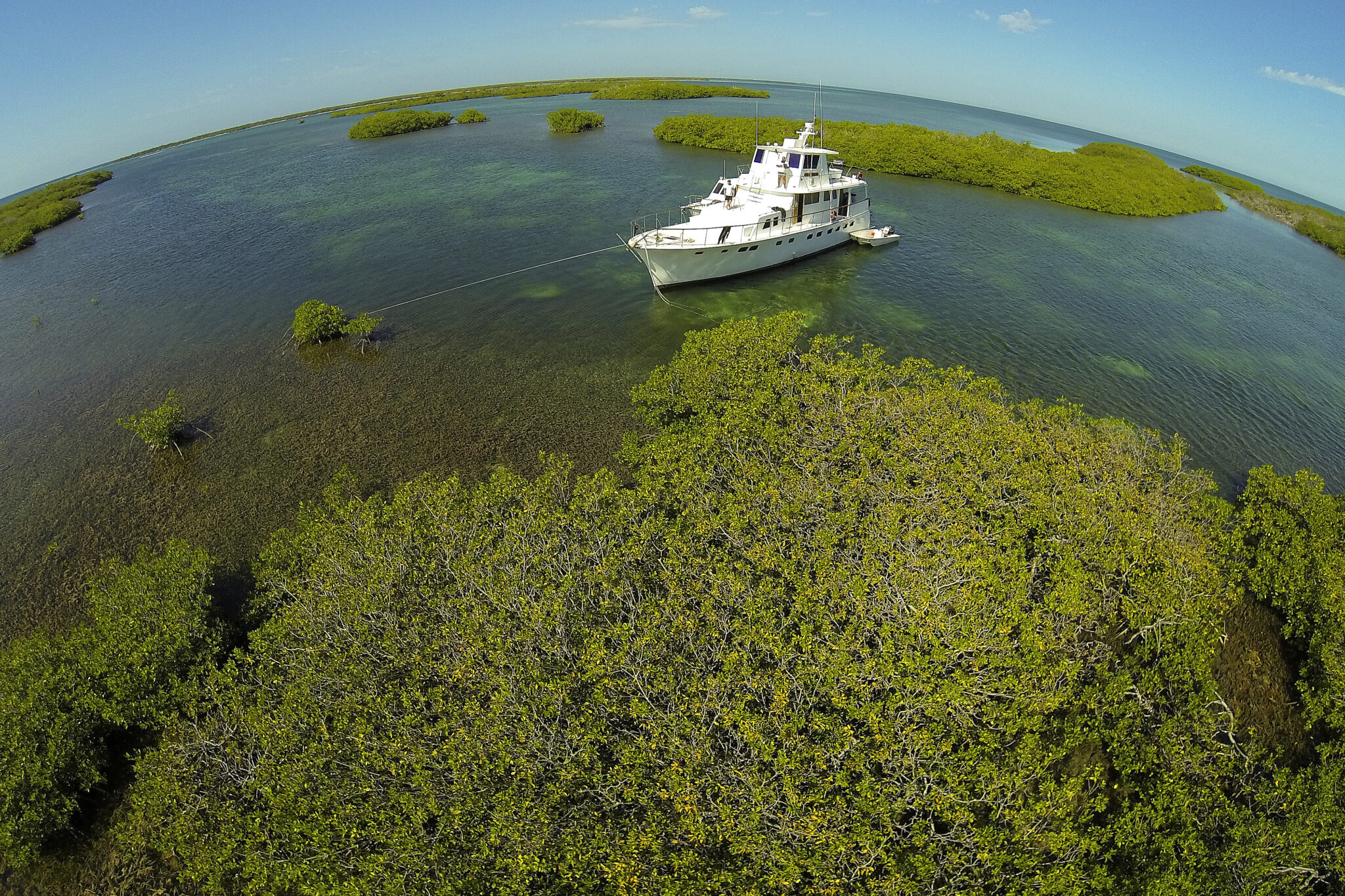
The Jardines de la Reina lay parallel to the Cuban coast and are reachable by boat from Jucaro, a small harbor in the Ciego de Ávila province. The boat ride varies depending on the weather conditions and is usually between two and a half and five hours.
From Havana to Jucara, it takes around six hours by bus, taking it easy and with a couple of stops. If you’re in a hurry and have a car, you can probably make it in four and a half to five hours. The streets are pretty good, just keep an eye out for a few holes here and there. Once you have arrived in Jucaro, you’ll embark either directly on the liveaboard you’ve booked or on a speedboat that will take you to a floating hotel in the middle of the Gardens of the Queen.
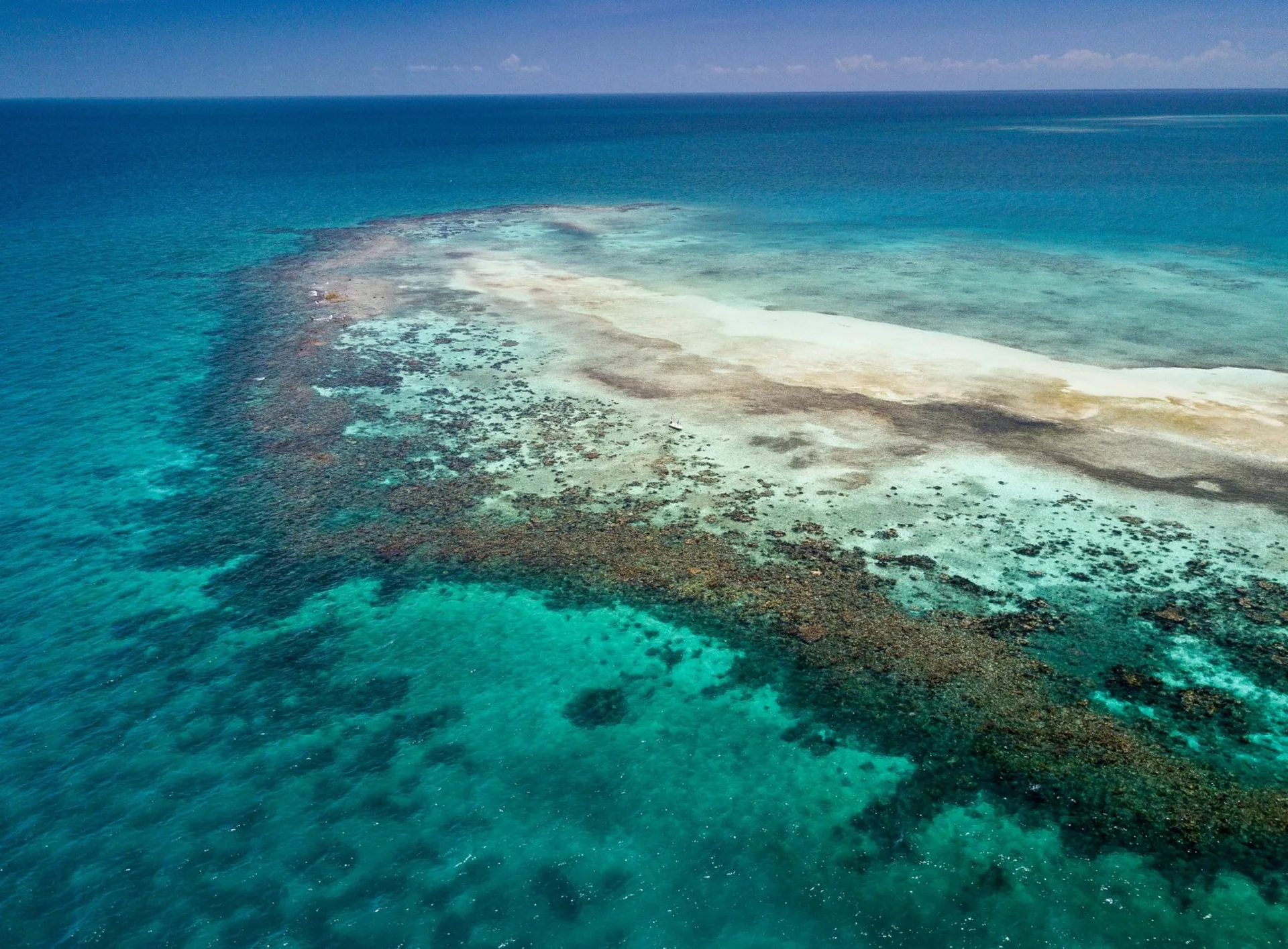 Image courtesy of Avalon
Image courtesy of Avalon
The only way to dive at the Jardines de la Reina (Gardens of the Queen) is with a liveaboard. There is no way to go diving here on daily trips from Cuba’s mainland.
At the time of writing, the largest operator diving in the Jardines de la Reina is Avalon. They own four liveaboards, namely the Jardines Avalon II, Jardines Avalon III, Jardines Avalon VI and the Jardines Avalon VII. These boats move around the Jardines de la Reina and anchor in different areas during your stay. In the same manner as the hotel, the dives are also carried out with the help of smaller dive boats.
The Aggressor Fleet also operate trips in the Jardines de la Reina on the Jardines Aggressor I and Jardines Aggressor II.
Diving in the Gardens of the Queen is pretty easy. Here are some highlights:
There is almost no current, and most of the area is protected from waves and rough seas. The water is warm, averaging between 79 °F (26 °C) and 84 °F (29 °C). Visibility is great, often 100 feet (30 m) or more.It is a safe environment for beginners and, thanks to the great marine life, it’s also a great place for experienced divers.
During a trip to Jardines de la Reina, there are two types of dives you’ll experience: shark and reef dives.
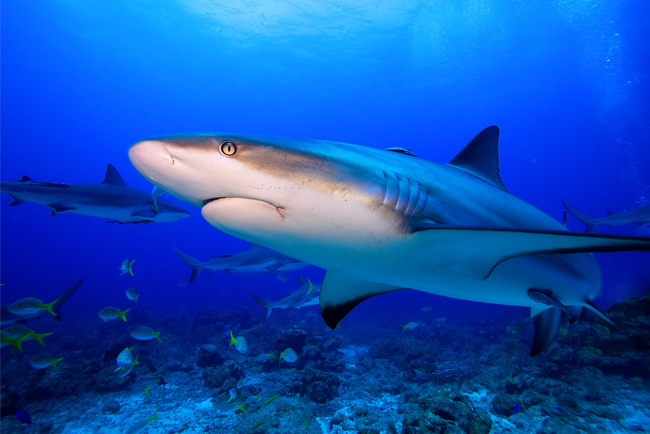
The Gardens of the Queen are a prime destination for shark diving. You can see sharks on most of the dives, but there are specific spots where you can encounter up to 30 of them. These 10-foot (3-meter) Caribbean reef sharks and silky sharks often closely approach divers. They are not afraid, and neither should you be. Get comfortable and remain still to admire these sharks swimming around you.
Usually big groupers join the feast, too. In the blue, you can spot barracudas that are too shy to join in but still pretty to look at from afar.
Some of the best shark dive sites are Pipín, Black Coral I and II, and Five Seas.
The reef here is a healthy garden of soft corals, sponges and sea fans. Stunning landscapes like canyons and pinnacles complete the picturesque scene. Don’t expect vivid colors, like in the Maldives or the Red Sea. The colors in the Gardens of the Queen are slightly hued but still impressive.
Some of the best reef dive sites are Farallón and Vicente.
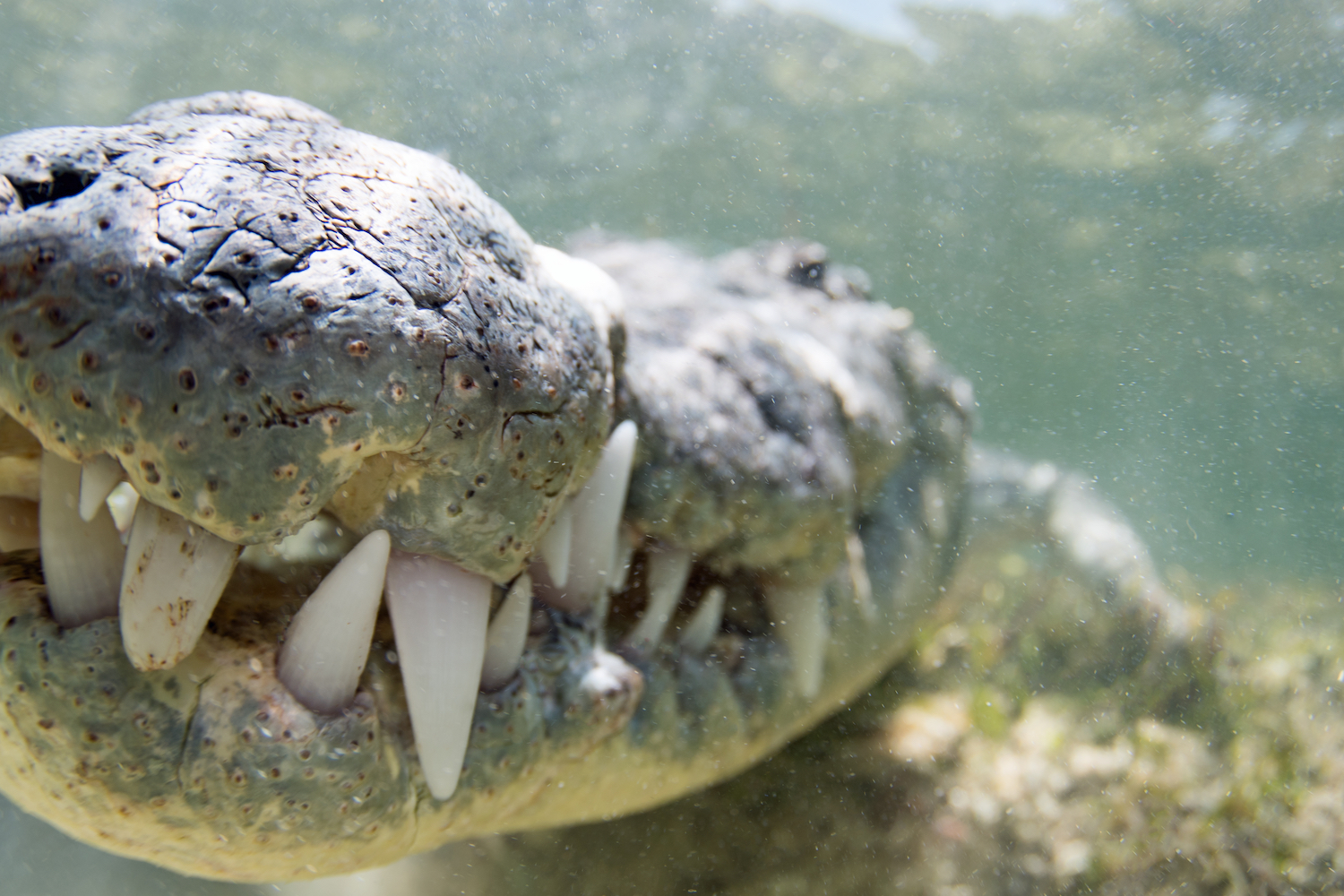
If you’re one of those people that needs an adrenaline rush every now and then, you can’t miss this.
There are a couple of areas in the mangrove where you can find crocodiles, and you can snorkel with them! Of course, ask the guide before jumping in, enter quietly, move slowly, and you’ll be surprised how close you can get. The water is a bit cloudy, but don’t forget your camera. It’s guaranteed to be a unique shot!
Cuba is a year-round diving destination. There are some times of the year when diving is slightly better or worse, but it can be comfortable during any month.
To be picky, the high season and best time to go is December through April, when you’ll find the best possible weather. November to April is the dry season, while May to October is the rainy season. Also note that in October, there is a heightened risk of hurricanes, but the risk is still pretty low.
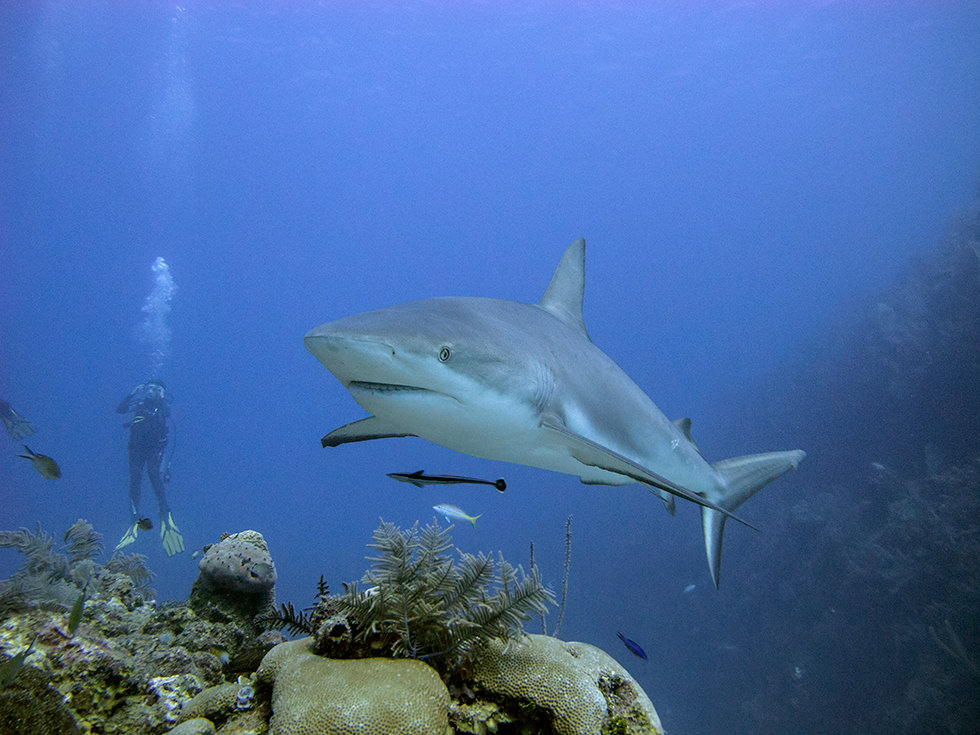
Are you ready to dive into the Jardines de la Reina (Gardens of the Queen)? The reefs, sharks and crocodiles are waiting to give you the adventure of a lifetime. Click the button below to explore the liveaboard options in the area. Or get in touch with the PADI Travel team of Scuba Travel Experts. They are available 24/7 via phone, email and chat to help you find the best Cuba liveaboard for you.
BROWSE ALL LIVEABOARDS IN CUBA
Share This
